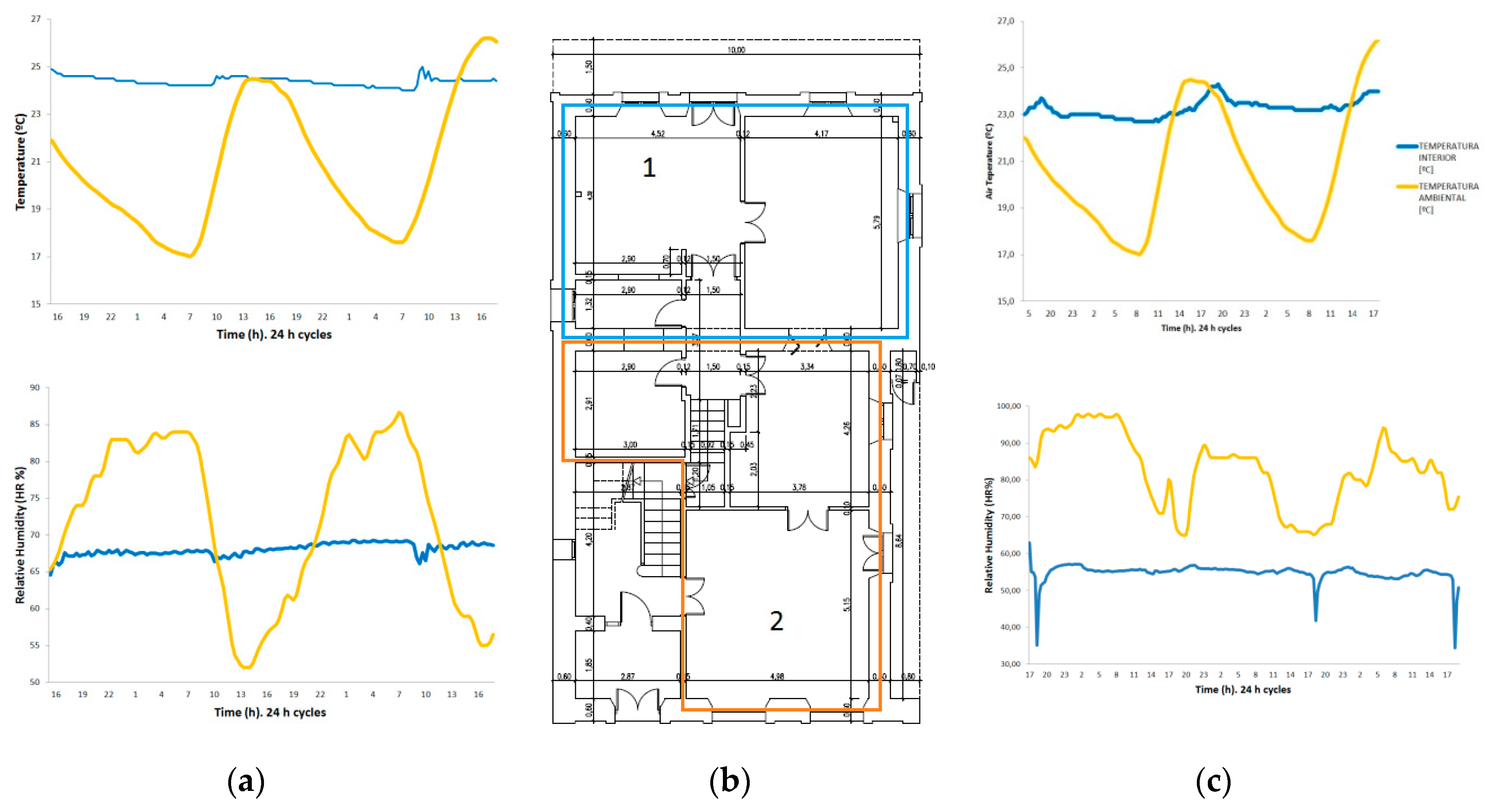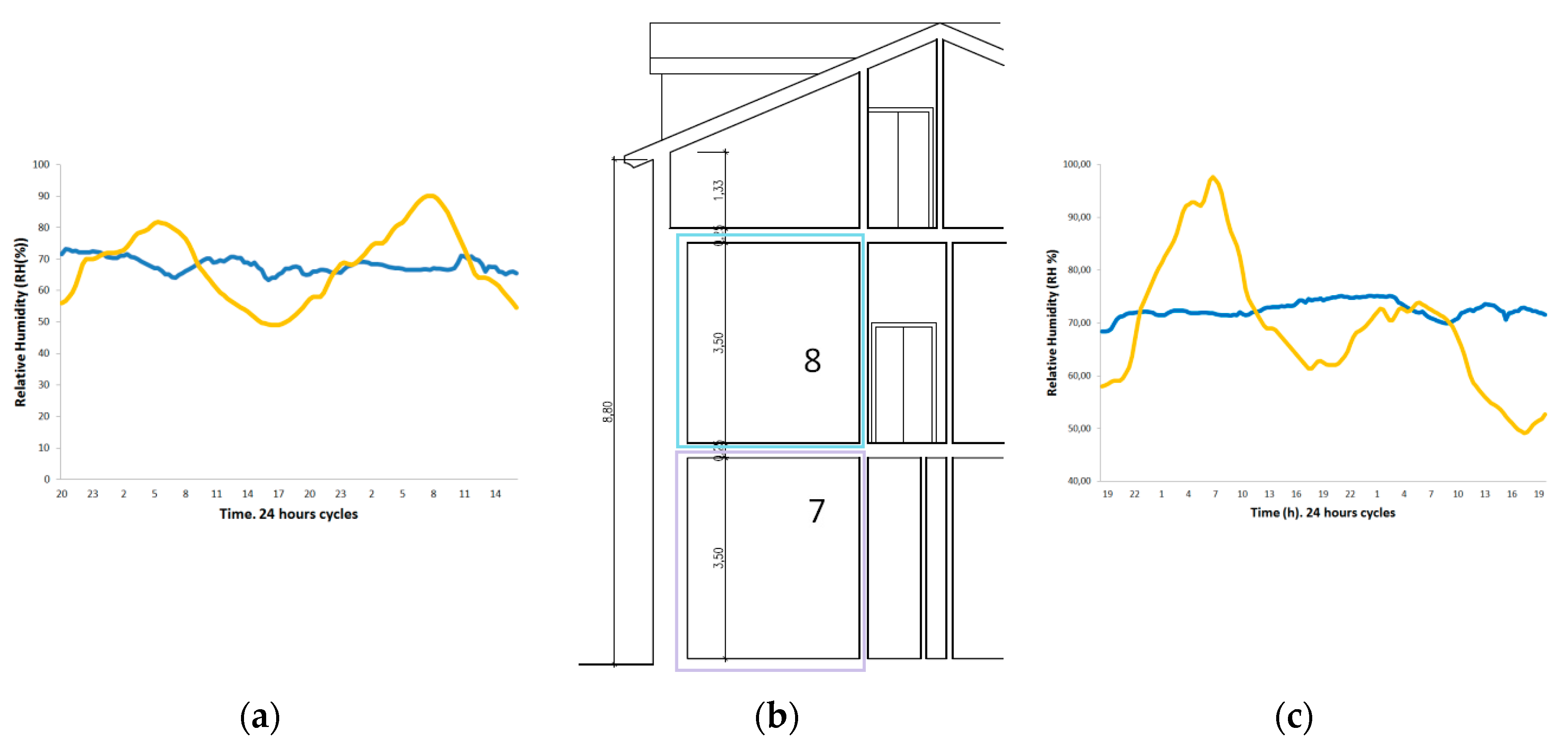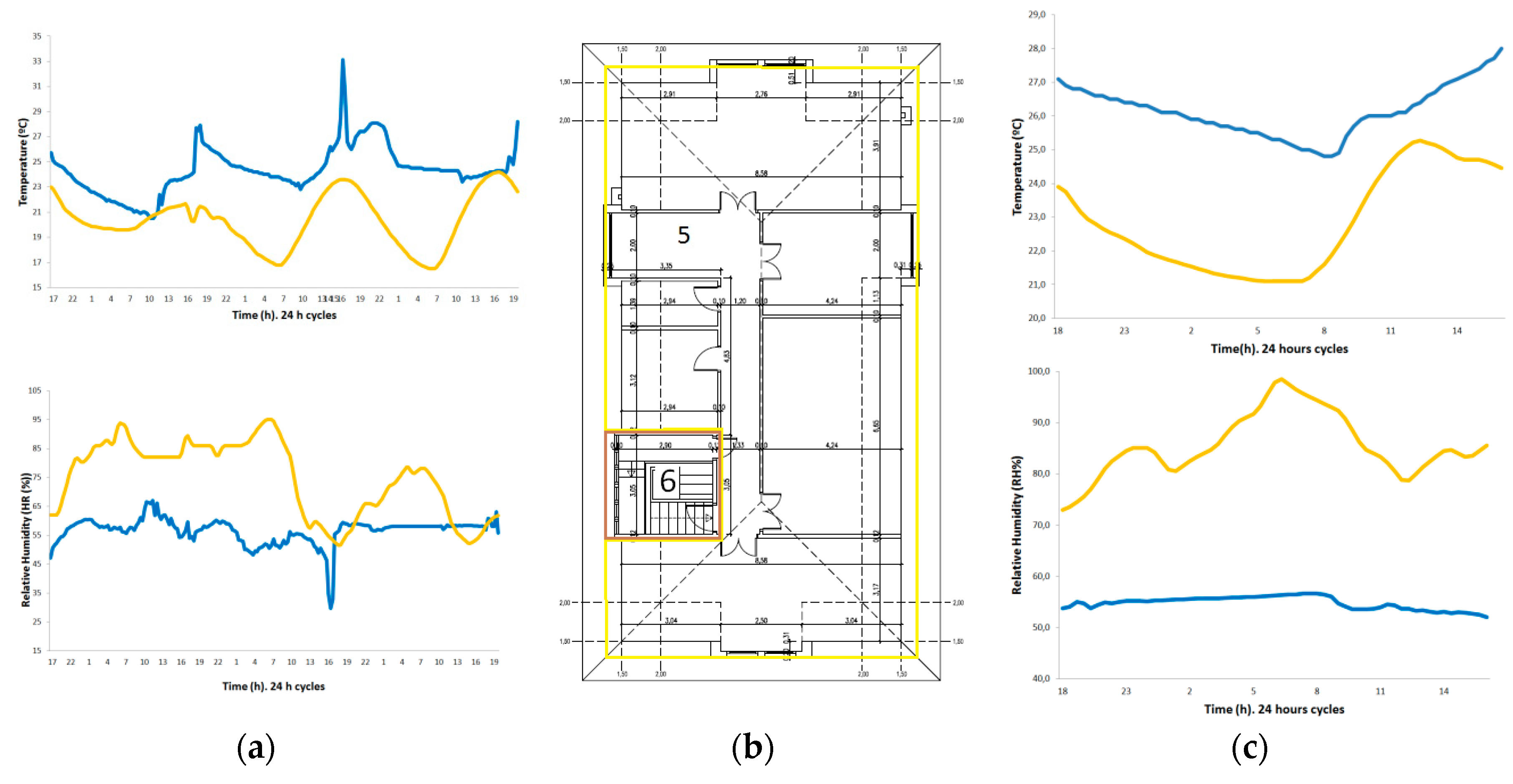Thermal and Hygric Inertia and Its Effects on Indoor Air Condition in a Traditional Asturian House: A Field Study †
Abstract
:1. Introduction
2. Materials and Methods
3. Results and Discussion
4. Conclusions
Author Contributions
Conflicts of Interest
References
- Olukoya Obafemi, A.P.; Kurt, S. Environmental impacts of adobe as a building material: The north Cyprus traditional building case. Case Stud. Constr. Mater. 2016, 4, 32–41. [Google Scholar] [CrossRef]
- Asadi, S.; Fakhari, M.; Sendi, M. A study on the thermal behavior of traditional residential buildings: Rasoulian house case study. J. Build. Eng. 2016, 7, 334–342. [Google Scholar] [CrossRef]
- Naïma, F.; Mébirika, B.; Belkacem, D.; Claude-Alain, R. The traditional house with horizontal opening: A trend towards zero-energy house in the hot, dry climates. In Proceedings of the SBE16 Tallinn and Helsinki Conference, Build Green and Renovate Deep, Tallinn, Estonia, 5–7 October 2016. [Google Scholar]
- Monge-Barrio, A.; Sánchez-Ostiz, A. Energy efficiency and thermal behavior of attached sunspaces, in residential architecture in Spain. Summer Conditions. Energy Build. 2015, 108, 244–256. [Google Scholar] [CrossRef]






Publisher’s Note: MDPI stays neutral with regard to jurisdictional claims in published maps and institutional affiliations. |
© 2018 by the authors. Licensee MDPI, Basel, Switzerland. This article is an open access article distributed under the terms and conditions of the Creative Commons Attribution (CC BY) license (https://creativecommons.org/licenses/by/4.0/).
Share and Cite
Lage-Cal, S.; Folgueras-Díaz, M.B.; Luengo-García, J.C. Thermal and Hygric Inertia and Its Effects on Indoor Air Condition in a Traditional Asturian House: A Field Study. Proceedings 2018, 2, 1386. https://doi.org/10.3390/proceedings2231386
Lage-Cal S, Folgueras-Díaz MB, Luengo-García JC. Thermal and Hygric Inertia and Its Effects on Indoor Air Condition in a Traditional Asturian House: A Field Study. Proceedings. 2018; 2(23):1386. https://doi.org/10.3390/proceedings2231386
Chicago/Turabian StyleLage-Cal, Susana, M. B. Folgueras-Díaz, and Juan Carlos Luengo-García. 2018. "Thermal and Hygric Inertia and Its Effects on Indoor Air Condition in a Traditional Asturian House: A Field Study" Proceedings 2, no. 23: 1386. https://doi.org/10.3390/proceedings2231386
APA StyleLage-Cal, S., Folgueras-Díaz, M. B., & Luengo-García, J. C. (2018). Thermal and Hygric Inertia and Its Effects on Indoor Air Condition in a Traditional Asturian House: A Field Study. Proceedings, 2(23), 1386. https://doi.org/10.3390/proceedings2231386




